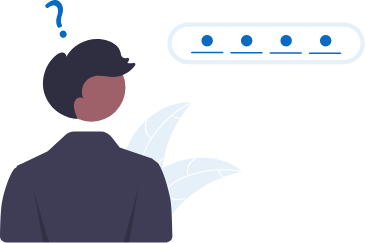The Paradox of Internalized Prejudice
Homophobia, transphobia, and biphobia marginalize the LGBTQ+ community. Although overt discrimination is condemned, these biases often manifest subtly. Unveiling the Complexities of Homo-, Trans-, and Biphobia: Surprisingly, they are sometimes perpetuated by individuals grappling with their own sexual orientation or gender identity.
What is Internalized LGBTQ+ Prejudice?
Internalized homophobia, biphobia, and transphobia refer to LGBTQ+ individuals internalizing societal stigma about their identities. Consequently, closeted individuals may unconsciously internalize these prejudices as a coping mechanism. In turn, they project internalized biases onto others in the LGBTQ+ community. This allows them to distance themselves from their authentic selves or avoid scrutiny.Additionally, internalized prejudice can lead to self-loathing, low self-esteem, and aversion to one’s identity. Furthermore, it may cause individuals to deny or repress their true selves. Alternatively, they may engage in self-punishing behaviors or perpetuate harmful stereotypes against other LGBTQ+ people.
The Paradoxical Expression of Prejudice
Paradoxically, some prejudices are perpetuated by closeted individuals navigating their identities in secret. Despite their internal struggles, they may express hostility or bias towards the LGBTQ+ community. This underscores the complex interplay of personal, social, and cultural factors influencing LGBTQ+ attitudes.
Navigating Cultural and Social Pressures
Moreover, cultural and social norms often perpetuate stigma and discrimination. Specifically, they reinforce heterosexuality and cisgender identity as the norm. As a result, closeted individuals may conform to societal expectations and express prejudice. Their aim is to align with dominant cultural values or preserve their social standing.Likewise, this phenomenon is prevalent in communities or belief systems that ostracize or reject LGBTQ+ identities. Consequently, LGBTQ+ individuals in such communities may internalize negative attitudes and beliefs. This leads to a conflict between their authentic selves and their desire for acceptance.
Breaking the Cycle of Internalized Prejudice
Addressing internalized prejudice requires a multifaceted approach:
- Firstly, challenging societal norms and promoting inclusive education
- Secondly, creating safe spaces for LGBTQ+ individuals to explore and embrace their identities
- Thirdly, providing psychological interventions like cognitive-behavioral therapy and support groups to confront internalized biases and foster self-acceptance
- Finally, promoting empathy, understanding, and open dialogue within communities to dismantle cultural and social pressures
Ultimately, dismantling systemic prejudices that fuel internalized biases is crucial. By fostering a culture of understanding, empathy, and respect for diversity, we can create an environment where every individual can live authentically without concealment or self-loathing.




 English
English Deutsch
Deutsch Українська
Українська Polski
Polski עִבְרִית
עִבְרִית Türkçe
Türkçe العربية
العربية Français
Français Italiano
Italiano Español
Español 繁體中文
繁體中文 简体中文
简体中文 Shqip
Shqip Bosanski
Bosanski Български
Български Hrvatski
Hrvatski Čeština
Čeština Nederlands
Nederlands Suomi
Suomi Српски језик
Српски језик Ελληνικά
Ελληνικά Русский
Русский Română
Română Português
Português فارسی
فارسی ਪੰਜਾਬੀ
ਪੰਜਾਬੀ Svenska
Svenska Afrikaans
Afrikaans አማርኛ
አማርኛ Հայերեն
Հայերեն Azərbaycan dili
Azərbaycan dili Euskara
Euskara Беларуская мова
Беларуская мова বাংলা
বাংলা Català
Català Cebuano
Cebuano Chichewa
Chichewa Corsu
Corsu Dansk
Dansk Esperanto
Esperanto Eesti
Eesti Filipino
Filipino Frysk
Frysk Galego
Galego ქართული
ქართული ગુજરાતી
ગુજરાતી Kreyol ayisyen
Kreyol ayisyen Harshen Hausa
Harshen Hausa Ōlelo Hawaiʻi
Ōlelo Hawaiʻi हिन्दी
हिन्दी Hmong
Hmong Magyar
Magyar Íslenska
Íslenska Igbo
Igbo Bahasa Indonesia
Bahasa Indonesia Gaeilge
Gaeilge 日本語
日本語 Basa Jawa
Basa Jawa ಕನ್ನಡ
ಕನ್ನಡ Қазақ тілі
Қазақ тілі ភាសាខ្មែរ
ភាសាខ្មែរ 한국어
한국어 كوردی
كوردی Кыргызча
Кыргызча ພາສາລາວ
ພາສາລາວ Latin
Latin Latviešu valoda
Latviešu valoda Lietuvių kalba
Lietuvių kalba Lëtzebuergesch
Lëtzebuergesch Македонски јазик
Македонски јазик Malagasy
Malagasy Bahasa Melayu
Bahasa Melayu മലയാളം
മലയാളം Maltese
Maltese Te Reo Māori
Te Reo Māori मराठी
मराठी Монгол
Монгол ဗမာစာ
ဗမာစာ नेपाली
नेपाली Norsk bokmål
Norsk bokmål پښتو
پښتو Samoan
Samoan Gàidhlig
Gàidhlig Sesotho
Sesotho Shona
Shona سنڌي
سنڌي සිංහල
සිංහල Slovenčina
Slovenčina Slovenščina
Slovenščina Afsoomaali
Afsoomaali Basa Sunda
Basa Sunda Kiswahili
Kiswahili Тоҷикӣ
Тоҷикӣ தமிழ்
தமிழ் తెలుగు
తెలుగు ไทย
ไทย اردو
اردو O‘zbekcha
O‘zbekcha Tiếng Việt
Tiếng Việt Cymraeg
Cymraeg isiXhosa
isiXhosa יידיש
יידיש Yorùbá
Yorùbá Zulu
Zulu